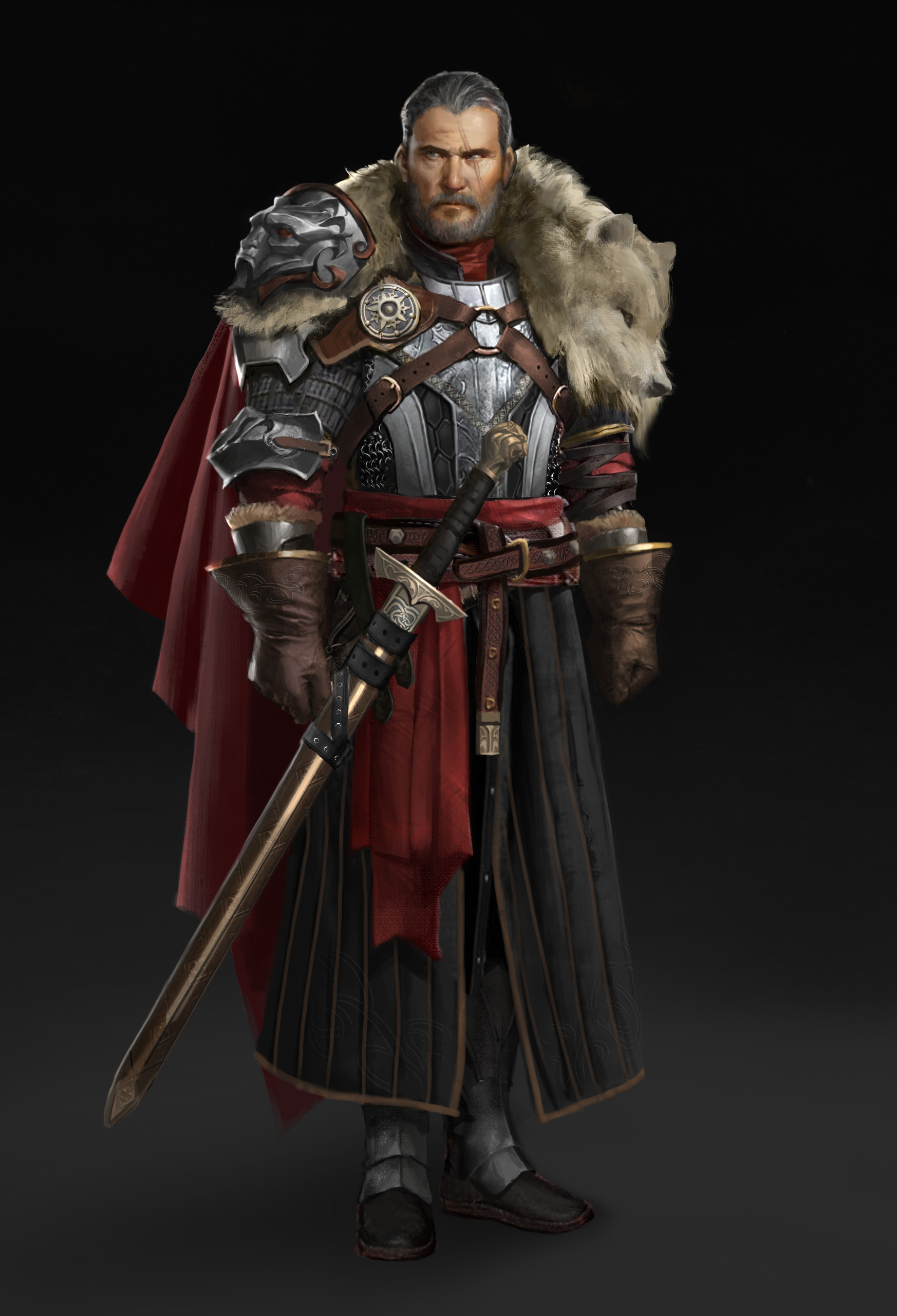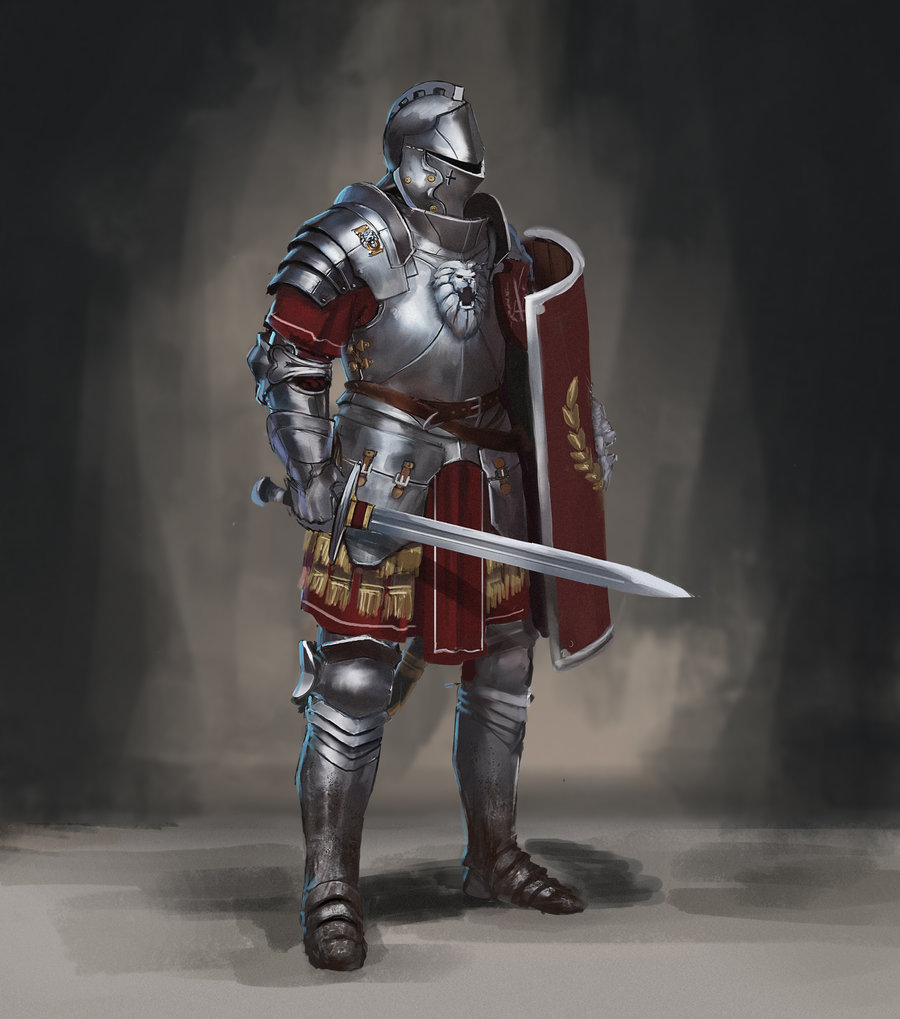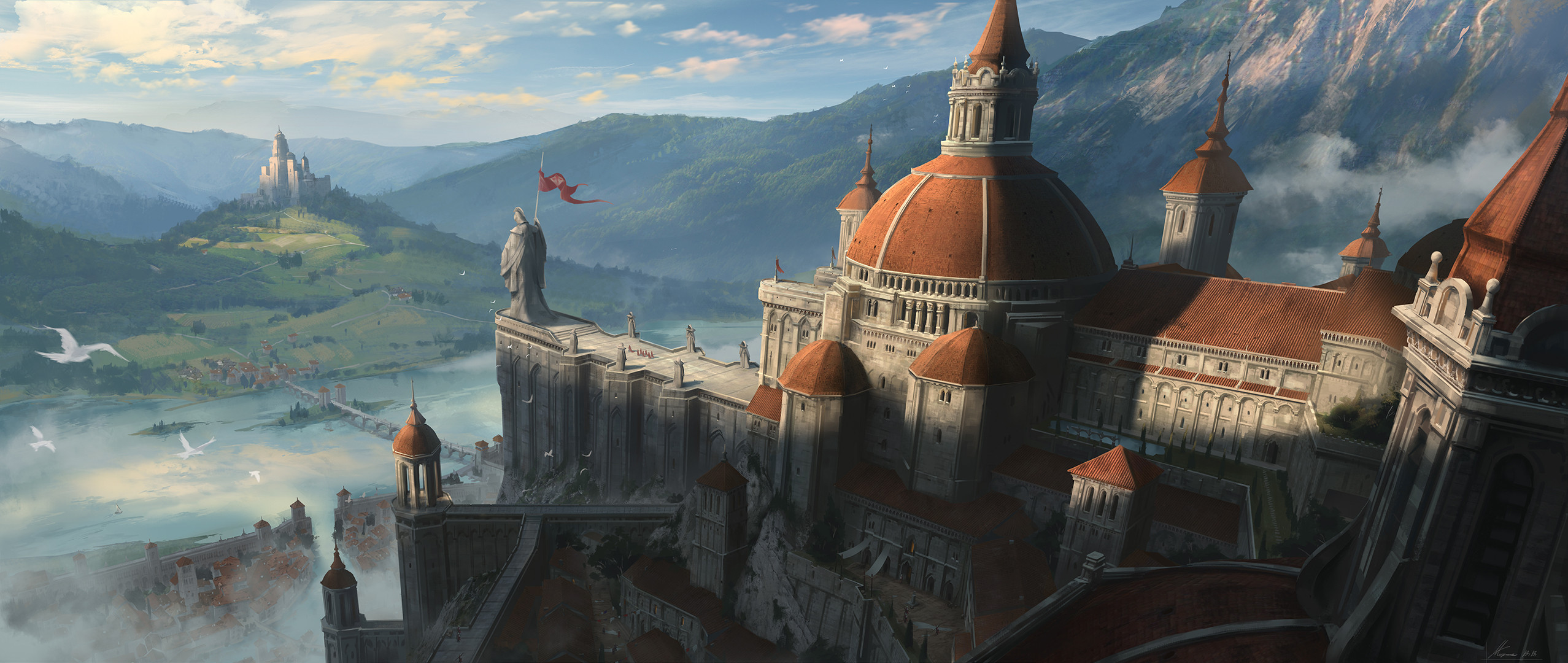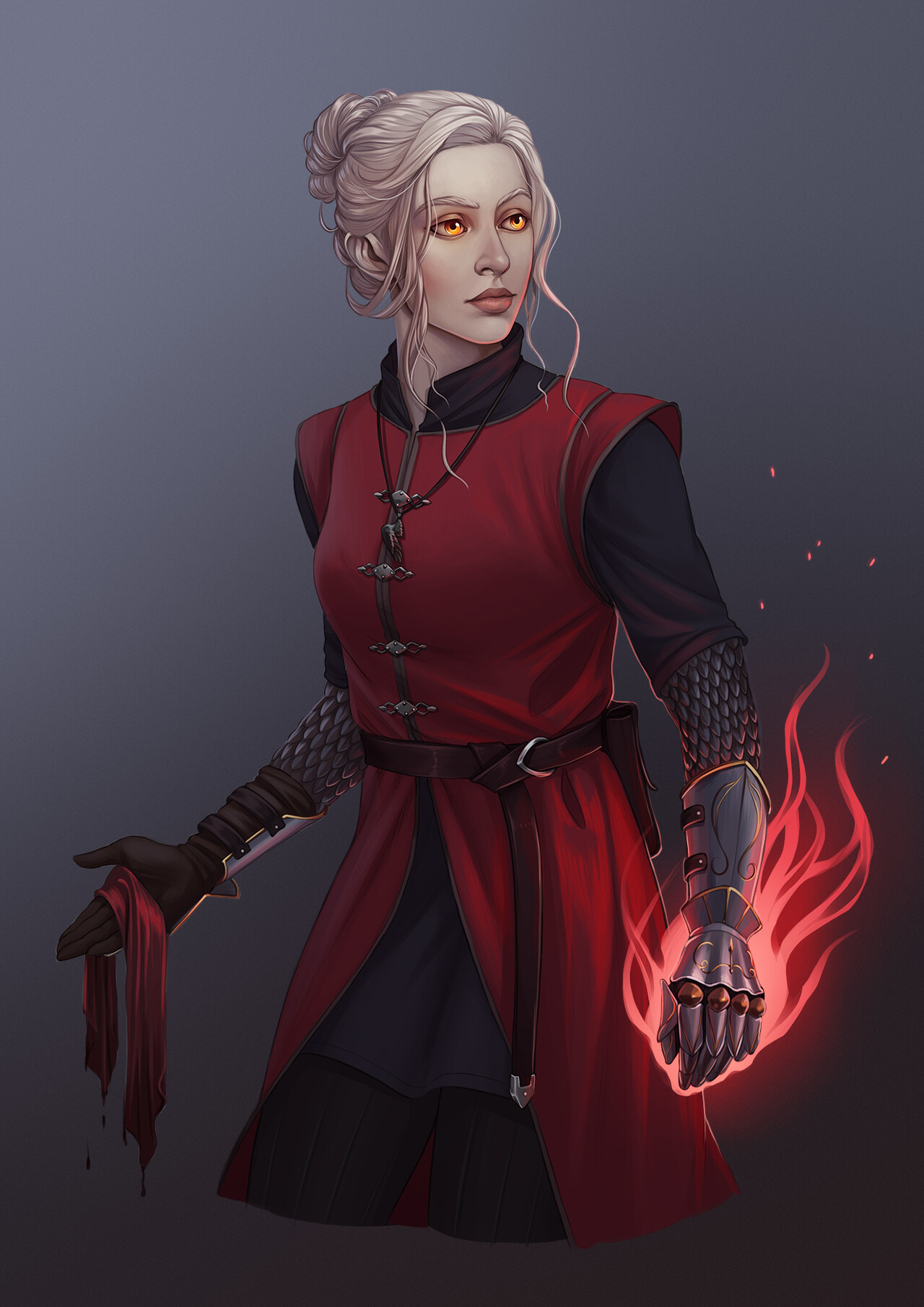Pratan
Blessed be those upon the mountains, whose peaks stand high towards his holy domain. Blessed shall he be who takes not from those below, but gives shelter beneath his mighty wings.Located in the far east of the Eletherean continent, Pratan is a theocratic kingdom split primarily among four major feudal holds supplemented by numerous smaller territories. Ruled at its head by the Chaltaric Golden Church in the wealthy capitol of Rive on the outskirts of the krukshian mountain range and sat adjacent to the Great Tharronese River, titles of nobility are split between those present in a more traditional feudal society and positions of great importance within the Church itself. Pratan takes a great deal of cultural heritage and tradition from the empire of Gitaea, known as the Jewel of the East prior to its decline in the mid–first-era, though most of this influence takes only the form of what can be garnered from old texts and historical descriptions. This practice was first set in motion in the year 1034 by early Pratani monarch Alessandro Chiecco based on a belief that emulation of the ancient empire would similarly emulate its success at cultivating wealth and strength. The political affiliations of various scholars have lead to disagreements on whether the kingdom's proceeding development into its modern-day wealth and success is due to that emulation or simply the wealth of gold and gemstones continually mined from the mountain ranges its cities sit between, though the patronage that followed in the wake of the establishment of the Chaltaric Church and increasing reach of Chaltaric faith has lead to a swell of divine patriotism amongst the ruling classes. Pratan's four largest cities – Fila, Taggio, Malo, and the capitol in Rive – are each heavily militarized and all follow a very standard method of presentation and social order that has arisen out of a blend of Chaltaric religious practices alongside emulations of Gitaean culture.
Structure
The Golden Church and Highfather

by Ruan Jia
The Clergy
The Clergy is both the first and largest of the Four Arms which comprise the total of the Chaltaric Church's official body, and is itself made up of any and all ordained members – from the pastors in the smallest of recognized villages to the highest bishops holding service within the walls of the Golden Church itself – which conduct sermons, offer guidance, or spread the influence and knowledge of Chaltar in any more mundane ways. Though priesthood is the most common profession held by ordained Clergy members, plenty of those serving in more past and present have held roles as scholars and academics, lecturers or instructors, advisors to those both within and without the Golden Church itself, and community leaders in small, often localized regards. Magical knowledge and capability is kept highly regulated within the Chaltaric Church and the lands over which it presides, though Clergy members are most often permitted the most freedom in the use of those few mystic schools they are allowed to study. Often trained extensively in sects of light and healing when working in close enough proximity with the church to be allowed access to proper instruction and resources, those who complete such training become highly sought-after healers for both the Chaltaric faithful and common folk alike. Mundane healers, however, comprise a much larger portion of the Clergy's full body, as training a newly ministered incumbent in the art of surgery and proper doctoring requires much fewer resources and hours of work than trying to teach them in casting of sanamancy — and has a much lower chance of killing the incumbent, as well. Despite their proficiencies, it is rare to see a member of the Clergy under the employ of any significant figure outside of the Church due primarily to the notions that their duties to the Pontifex, Altopadre, and Chaltaric Church itself will significantly outweigh their duty to their employer. Such worries are null if the clergymember has been excommunicated, but it is as dangerous to employ a a trained Cleric of Chaltar faced with excommunication as it is rare to find one who has not already been killed.Pontifex
The Pontifex, one of four members of the Chaltaric Conclave, sits at the highest position of the Clergy and tends to business primarily concerned with the daily functioning of the Church itself – the building and the institution alike – alongside the ordaining of Bishops and High Priests, and the maintenance of canonized scripture and Praesidium's Grand Library alike. Their position finds itself the most concerned with the goings-on of the common folk in Pratan and is often presented as the unofficial but presumed voice of the Church itself save for the rare occasions in which the Altopadre speaks to the public. The current Pontifex, Ardenna Malisius da Malopodere, was seated in 1457 and is by far the youngest member of the Conclave at 32 years of age.The Paladins

by L3monjuic3
Praetor
The Paladins are currently lead by Praetor Sofia Cipriani.The Inquisitors
Third of the Four Arms, the Inquisitors serve two purposes of equal importance. The first, as their name might suggest, is to enforce the adherence to the religious laws set in place by the Golden Church. While a theocracy, Pratani law only encourages, rather than requires, those living within its borders to practice Chaltaricism in their daily lives – many passages in their holy scriptures, in fact, stress the point that it cannot be expected for forceful converts to truly respect the practices and traditions of worshipers who do not respect them in turn, and thus should only be brought into worship if they have willingly joined of their own accord. While this means that, surprisingly in the eyes of many, the average Pratani citizen enjoys a rather large amount of religious freedom as compared to historical depictions of Gitaean religious law, laws involving blasphemy and heresy are still strictly and punitively enforced within the borders of Pratani society. Of highest importance are practitioners of magic, as all those who seek to learn such supernatural abilities must only do so through the blessing of the True God, else it is considered devilry. Inquisitors have been occasionally called "mage hunters" by foreign powers for their proficiency in carrying out this specific task. Other duties of the Inquisitors include the removal of false idols on display outside of specific places of worship, the execution of the supernatural or undead, and fine, imprisonment, or execution of willing blasphemers who choose to speak ill of the True God to the public, adulterers, cult organizers and their followers, revolutionaries, false clergymen, and tithe evaders.Praefectus

by Howard Pak
The Carnifices

by Heewon Kim
Frumentarius
The Devout dress most often in plain black robes while in worship, uniformly shaving their heads and faces and periodically fasting to maintain an identity entirely in service to the True God. Members of the order are rarely seen outside of Church grounds or other Chaltaric holy sites, but it is a well-known secret that they are used as informants, spies, and assassins for elites within the Church's hierarchy. The Devout are currently lead by Frumentarius L'anziano, originally appointed to the position in 1419.Military

by L3monjuic3
Centurions

by L3monjuic3
Type
Geopolitical, Kingdom
Demonym
Pratani
Government System
Theocracy
Power Structure
Feudal state
Official Languages








Comments